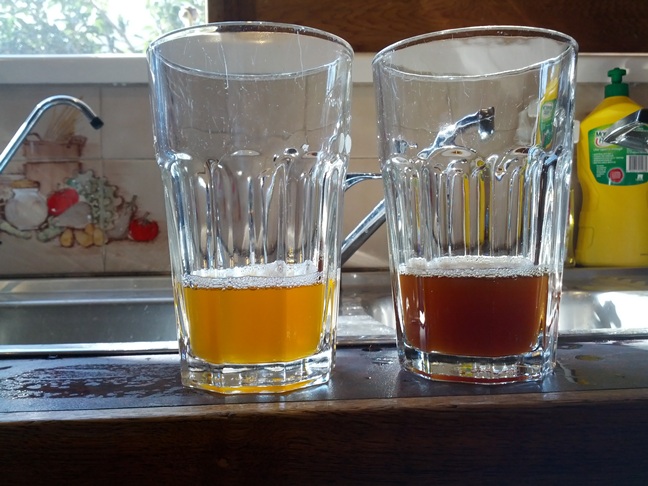JoeyJoeJoe
Well-Known Member
Hi
It has been about 8 years from my uni brewing days that was all about massive quantitiy over quality as it only had to taste better that cask wine I now want to get back into brewing but do better job.
I now want to get back into brewing but do better job.
I have been reading all over this site and others but I still have a question that I cant find the awnser to.
I want to make a lager I already have the kit and malt and have bought 2 packs of the w34/70 yeast. (I also finished setting up my stc-1000 and deep freeze today!! what a great little device!).
I have read all about dry pitching and rehydrating my problem is that I did a trial today with a half filled fermenter and the temperature is going to take a fair while to get from the 23C pitching temp to the 12C fermenting temp that fermentis recommends. Maybe 12 hours! First question is this too long????
So if I go the rehydrate and cold pitch method do I have to cool the rehydrated yeast down to 12C before I pitch? Also do I have to warm the yeast up before I rehydrate? (currently in the fridge)
Anyway for the cold pitch method does this sound like a plan.
1. mix up kit and malt in hotwater add to fermenter.
2. add tap water to fermenter seal up and put in freezer(set stc to 12C taped probe to fermenter)
3.Wait
4.Stc says 12C YAH!
5.Warm up yeast in my pocket for 5 minutes. then Pitch in to about 500ml of room temp water.put some glad rap on top.
6.Wait 30 minutes give a little stir
7.Put yeast mix in freezer aswell.
8.Wait 30ish minutes? For it to cool down then pitch???
Brew day is tomorrow help me out!!!
Thank you
James.
It has been about 8 years from my uni brewing days that was all about massive quantitiy over quality as it only had to taste better that cask wine
I have been reading all over this site and others but I still have a question that I cant find the awnser to.
I want to make a lager I already have the kit and malt and have bought 2 packs of the w34/70 yeast. (I also finished setting up my stc-1000 and deep freeze today!! what a great little device!).
I have read all about dry pitching and rehydrating my problem is that I did a trial today with a half filled fermenter and the temperature is going to take a fair while to get from the 23C pitching temp to the 12C fermenting temp that fermentis recommends. Maybe 12 hours! First question is this too long????
So if I go the rehydrate and cold pitch method do I have to cool the rehydrated yeast down to 12C before I pitch? Also do I have to warm the yeast up before I rehydrate? (currently in the fridge)
Anyway for the cold pitch method does this sound like a plan.
1. mix up kit and malt in hotwater add to fermenter.
2. add tap water to fermenter seal up and put in freezer(set stc to 12C taped probe to fermenter)
3.Wait
4.Stc says 12C YAH!
5.Warm up yeast in my pocket for 5 minutes. then Pitch in to about 500ml of room temp water.put some glad rap on top.
6.Wait 30 minutes give a little stir
7.Put yeast mix in freezer aswell.
8.Wait 30ish minutes? For it to cool down then pitch???
Brew day is tomorrow help me out!!!
Thank you
James.





